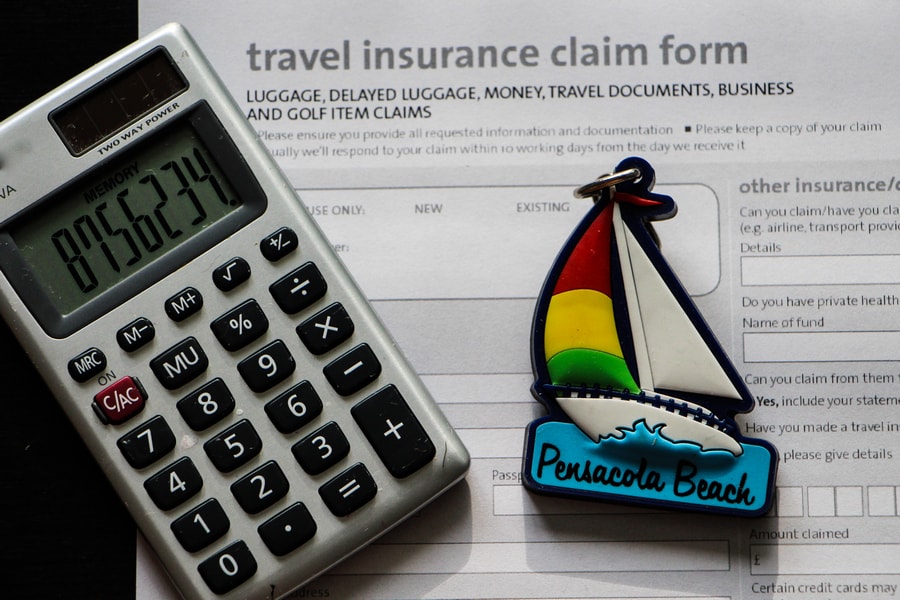10 Steps to Take When Buying Travel Insurance
Although we don’t like to think about it, there are many things that can go wrong when travelling internationally. This could be anything from a delayed or missed flight, though to lost luggage, illnesses, or injuries. Some might be considered a minor inconvenience, while others can turn into a costly nightmare.
Once you seriously think about what could go wrong, you might be tempted to cancel all your plans and rather spend your time at home. But instead of doing that, you could get www.travelinsurance.com.au and be covered for a variety of mishaps, leaving you to enjoy every moment of your holiday instead of fretting about what could go wrong.
Travel insurance is not one-size-fits-all. Different policies offer different types of benefit. Here are a few things to consider when looking at travel insurance policies.

Understand the different types of coverage
Different insurers will offer different types of coverage, from comprehensive coverage, through to baggage insurance, cancellation insurance, and more.
Comprehensive insurance is generally the better type of coverage since – as the name implies – it offers coverage against a number of unexpected events. But it is also more expensive than other forms of insurance, not forgetting that you might already have automatic medical insurance just through booking your flight using your credit card. Check out this article on whether or not travel insurance is worth the expense for you.
Whatever your reason for not wanting comprehensive travel insurance, make sure the policy you check covers you for exactly the right purposes.
Check the coverage limit
Many policies have very high limits – or no limit at all – for medical expenses, with varying limits for all other types of coverage. If possible, compare a number of different policies, paying attention not only to the cost, but also to limits, any excess that is payable, and other conditions. Policy wording and benefit limits are every bit as important as the cost of the policy.
Read the entire policy before deciding
It is often said that the devil is in the details, and this is no truer than when it comes to the wording in insurance policies. The summary of the policy may not include important details relating to specific exclusions or requirements that need to be met.
Spending a few minutes reading the policy in full can reveal important information not disclosed elsewhere, which could influence your decision to choose one policy over another.
Buy it when booking your trip
The best time to buy your travel insurance is when buying to flight tickets, or very soon after. Some policies actually stipulate that the insurance needs to be bought within two weeks of booking, but buying it early could also earn you a discounted rate or extra coverage.
Check if pre-existing conditions are covered
Most pre-existing medical conditions are not automatically covered by any form of travel insurance. Some are completely excluded, while others might be covered after you complete an assessment, and are willing to pay an extra premium. Either way, it is always better to be completely honest about any medical conditions you already have, to prevent any claims from being denied later.
Check what the exclusions are
It is quite normal for any travel insurance policy to have certain exclusions, even with comprehensive cover. These exclusions should be listed in the policy, and you would be aware of them if you spend some time reading the full policy document. Make note of any exclusions and then discuss them with the insurer so that you have a better understanding of how they work. The worst time to learn about any exclusions is when trying to make a claim while still travelling.
Understand the claim process
And speaking of making claims, another important point to look at beforehand is the actual claims process. If you in the unfortunate position of having to make a claim, it will most likely be while you are still travelling. Being able to initiate the claim telephonically is great, but it could also be quite costly to you. Check whether it is possible to make a claim online, or if your insurer has local representatives where you will be travelling. Also, familiarise yourself with what documents are required when making a claim.
Ensure you are covered in all countries you are visiting
This is important for two reasons: first you may find that some countries or locations are not covered at all by any insurer, and secondly, if you are planning any extended stopovers along the way, these need to be declared. Your policy won’t automatically apply in all countries, only those that you have specified or declared when buying the insurance. An unplanned three-day jaunt across the border into another country could see you without coverage for that period.
Check if there are any age limits?
When it comes to age limits, it doesn’t only apply to senior travellers. It is quite common for insurers to only offer coverage to travellers under 80, 70, or 65 years of age, but it is also possible to find insurers who only offer coverage to those under the age of 30-years. Again, exclusions like this should be quite apparent from the policy wording, but if you aren’t sure, ask.
Make copies of the policy
Finally, a point many people neglect and regret only when it is too late. If you’re a seasoned traveller, you should already be quite used to making copies of your passport, and other important travel documents and this should include a copy of your travel insurance.
Make sure the copy is kept separate from the original, and it could also help to give an additional copy to a close friend or family member and upload a digital copy to the cloud. That way, no matter what happens, someone will be able to access a copy of your policy.
Conclusions
Travelling can come with many unexpected events, some more pleasant than others. Having travel insurance will help you in being prepared for the less pleasant surprises, with a small cost outlay protecting you from more serious financial burden later.
Post sponsored by www.travelinsurance.com.au






